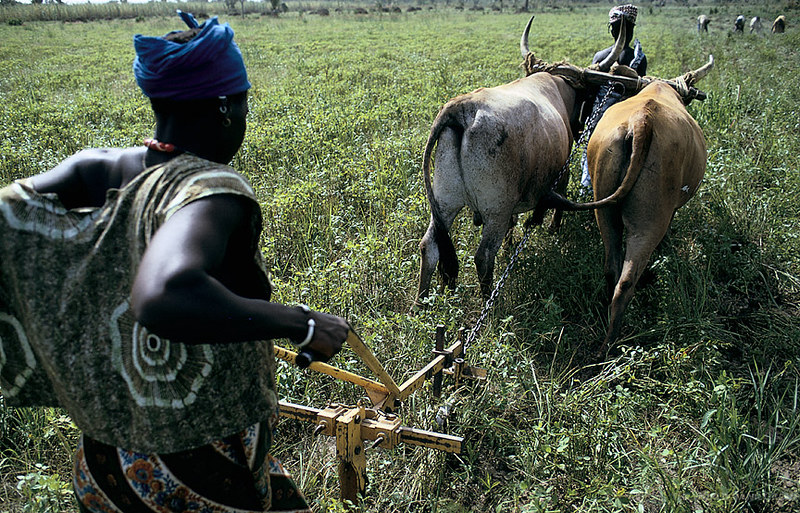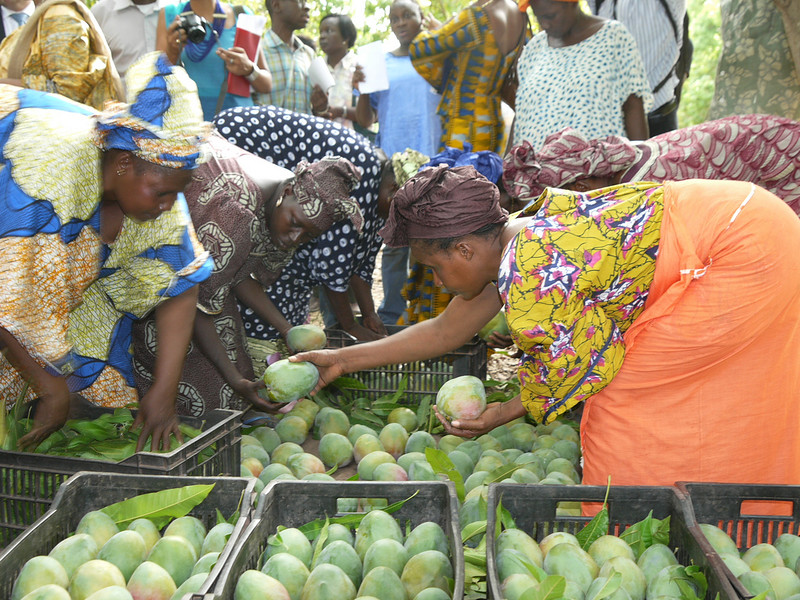This Climate-Smart Village in Mali is testing agricultural innovations
Integrating climate-smart crop-tree-livestock systems in the Sahel may be a solution to the region’s food insecurity amidst its vulnerability to climate change.
T he Sahel region is one of the most vulnerable areas in the world. It has been long affected by recurring conflict, insecurity and climate variability, and nearly 80% of its population lives on less than $2 a day. With its low productivity, under-developed markets, and vulnerability to climate change, Mali is a particularly affected country.
The CGIAR Research Program on Climate Change, Agriculture and Food Security (CCAFS) noted that despite its poor performance, the agricultural sector remains the cornerstone of Mali’s economy and holds great potential for driving economic growth. Therefore, CCAFS and partners established a Climate-Smart Village (CSV) in Mali, in order to test a range of climate-smart interventions.
The integration of livestock production systems into the CSV is considered a unique opportunity to boost the livestock sector of the Segou region, considering its huge, unexploited potential for poverty alleviation and improving food security. In order to seize this opportunity, CCAFS West Africa—along with national partner Institut d’Economie Rurale (the Institute of Rural Economy, IER) and local community organizations—initiated a project on establishing climate-smart agro-silvopastoral (crop-tree-livestock) systems.

Agriculture is the core of Mali’s economy. Photo by Ray Witlin / World Bank on Flickr.
The agro-silvopastoral research project aims to:
- establish demonstration plots with seasonal gardens, various soil and water conservation techniques and improved crop varieties
- promote and expand the adoption of climate-smart agro-silvopastoral systems for improved and sustained fodder availability and livestock nutrition
- test with the purpose of scaling various climate-smart agriculture (CSA) practices and technologies
Increased carbon sequestration and improved soil conditions
Agro-silvopastoral systems are land-use practices in which trees and crops are integrated into livestock production, and they play an essential role in reducing vulnerability and increasing crop resilience, thus help communities better tackle climate risks. The trees and shrubs planted as part of the model also increase carbon sequestration in the soil as well as biomass. According to Dr. Siaka Dembélé, researcher at IER and coordinator of the Cinzana CSV, one of the common ambitions is the production of species that can adapt to climatic conditions and produce a lot of biomass which will be used to feed cattle and sheep even during the dry period in the years to come.
On a 4 hectare site in the Climate-Smart Village various CSA practices are being carried out by both male and female producers. The perimeter is arranged and subdivided into well-defined spaces dedicated to pastoralism and agriculture, including market gardening and planting fodder species.
Local farmers organized into community working groups learn soil-management practices that enable them to exploit the degraded soil. They also learn how to grow and maintain some endangered fodder species, such as Gliricidia sepium or Ceiba pentandra. The combination of leguminous fodder species, such as Gliricidia sepium, with local staple crops, such as millet, resulted not only in higher output of animal feed, but also improved soil conditions and carbon sequestration.

Agro-silvopastoral production improves livelihood opportunities, particularly for women. Photo by United Nations Development Programme on Flickr.
Increased carbon sequestration and improved soil conditions
In addition to serve as a local climate risk mitigation initiative, the agro-silvopastoral project is expected to offer new income streams for farmers, breeders and vegetable growers (mainly women), provide safety-nets in times of losses or shortfalls in incomes, livestock or vegetables; and serve as a potential pathway out of rural poverty and food insecurity.
The nursery and the vegetable garden (under female management) is already bearing fruit. The fodder species cultivated in the nursery are sought after in the locality and even beyond, ensuring high demand for the output. The vegetables harvested all year round in the vegetable garden, once sold, are significant bonus for women who usually only earn just enough to cover the basic household expenses. Furthermore, the vegetables kept for household consumption also improve household food and nutrition security.
The most important benefit of the perimeter is not only the generation of income but also the contribution to the health of women and children through nutrients obtained from the vegetables harvested for household consumption.
Mariama, a vegetable producer.
The agro-silvopastoral production model in Cinzana proves that farmers, accompanied by action-research experts, can co-create appropriate solutions on the ground, take practical measures to adapt their farming practices so as to ensure reliable food supply and generate crucial and sustainable income.
The ideas presented in this article aim to inspire adaptation action – they are the views of the author and do not necessarily reflect those of the Global Center on Adaptation.